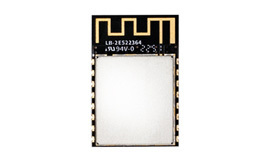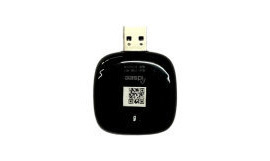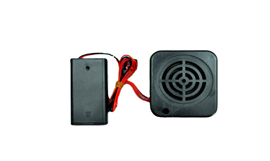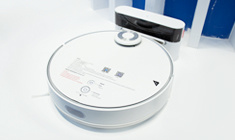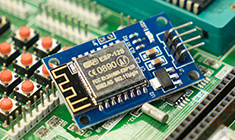
Internet of Things Security: Protect your home from cyber attacks
Release Time:
2021-04-07
With smart home devices growing exponentially in the tech market every year, more and more devices are connected to the Internet every day. Many of us find ourselves relying on this modern technology to help us carry out our daily tasks. However, connecting these devices to your network can leave yo
With smart home devices growing exponentially in the tech market every year, more and more devices are connected to the Internet every day. Many of us find ourselves relying on this modern technology to help us carry out our daily tasks. However, connecting these devices to your network can leave you vulnerable to cyber attacks without proper protection.
It is estimated that by 2025, there will be more than 64 billion iot smart devices in the world. The creators of this space are not done creating new and innovative products. Over the past decade, we've seen huge advances in a wide variety of devices, from everyday household appliances to luxury technology. Virtually every aspect of your life has a "smart" device, and many of them are affordable.
But many of these devices are dumber than they seem at first glance, especially when it comes to security.
In today's modern world, network security is a growing concern for many people. With the advent of new technologies that connect everything to the Internet, the attack surfaces and entry points for cybercriminals are increasing. Although security measures are put in place on the front end when developers create these devices, this is never enough. Therefore, owners need to take further precautions to protect themselves from all possible cyber threats.
Only 10 percent of smart device makers believe they have adequate security measures in place. Cybercriminals are getting smarter with each attack and learning new ways to break into our devices, so it's important to always be forward thinking.
The importance of smart home security
Many consumers tend not to believe that these risks affect them and their devices, but cybercriminals will target anyone or any vulnerable device. Malicious hackers can easily find unprotected Internet of Things devices, such as Shodan, on search engines and then target them with malware.
These cyber criminals may use your device to gain access to your home network or spy on you. Or they could recruit your device into their army of botnets to launch a massive DDoS attack, like the one on U.S. DNS provider Dyn in 2016, or they might use their new stronghold to launch ransomware attacks on you or other connected devices nearby. In its 2017 Internet Security Threat Report, Symantec reported that an average of one iot device was attacked every two minutes during peak activity.
Once cybercriminals access these devices, they can be infected with malware that helps them access your personal information. This can result in property theft, damage, financial loss, or identity theft. Thankfully, there are many steps you can take as a smart homeowner to protect your devices.
Protect your smart home devices
Protect your device immediately when buying and setting it up in order to provide you with the best protection from the start. Many of these devices often have little to no built-in security, so it is critical that you integrate it yourself. There are four main areas to focus on when protecting your devices:
encryption
Highly encrypted wireless routers are the foundation of all future security precautions. This process works by securing the information transmitted between your device and the Internet and preventing outsiders from accessing that information. Enforce WPA2(or Wifi password) on your wireless router to ensure its security and privacy. It would also be beneficial to consider using a virtual private network to encrypt your device by hiding your IP address so that outsiders cannot access your information.
verification
It is important to set up proper authentication for the device so that you can maintain the security of the device and the privacy of the data generated. Only users with appropriate access permissions are allowed to interact with the device. This may require a password or a guest account.
This is especially wise for smart speakers, where you may not want others to access your search history items. It's best to keep it private. Do this if your device allows you to set up two-factor authentication and voice recognition software. This creates a second layer of privacy that ultimately increases your chances of being protected from outside threats.
Platform security
Study the software on which the device runs and its internal platform to understand its performance to others and whether there are security vulnerabilities. Many offshore programs used by companies are loaded with security vulnerabilities, so it's important to be aware of them in advance. Instead, choose highly regarded brands in the smart device category, as these companies often use regulated and sophisticated platforms that are well prepared to meet your security needs.
Physical security
Attackers pray for iot devices to be placed in open places. Keep your smart home devices out of sight. Move them away from Windows, doors, etc., so criminals can't see them, as they may sniff around nearby houses in order to break in. Keeping devices in plain sight is a sure sign that you have valuable items in your home.
Always remember that if you are going to be out of the house, keep all devices stored outside in a secure location, such as a personal safe. Also, be careful when leaving boxes of newly purchased equipment on the curb, as they can also attract the attention of criminals.
Reprinted in the Internet of Things world

Guangdong Joinet IOT Technology Co.,Ltd
Manufacturing Base:
Joinet Technology Park,No. 168 Tanlong North Road,Tanzhou Town,Zhongshan City,Guangdong Province,China
Pre Sales Hotline:19966308713 13823973022
Switchboard:0760-8663 0003 (transferred) 523
Pre Sales Email:sw@znaiot.com


Contact Us:
Looking forward to your call anytime



